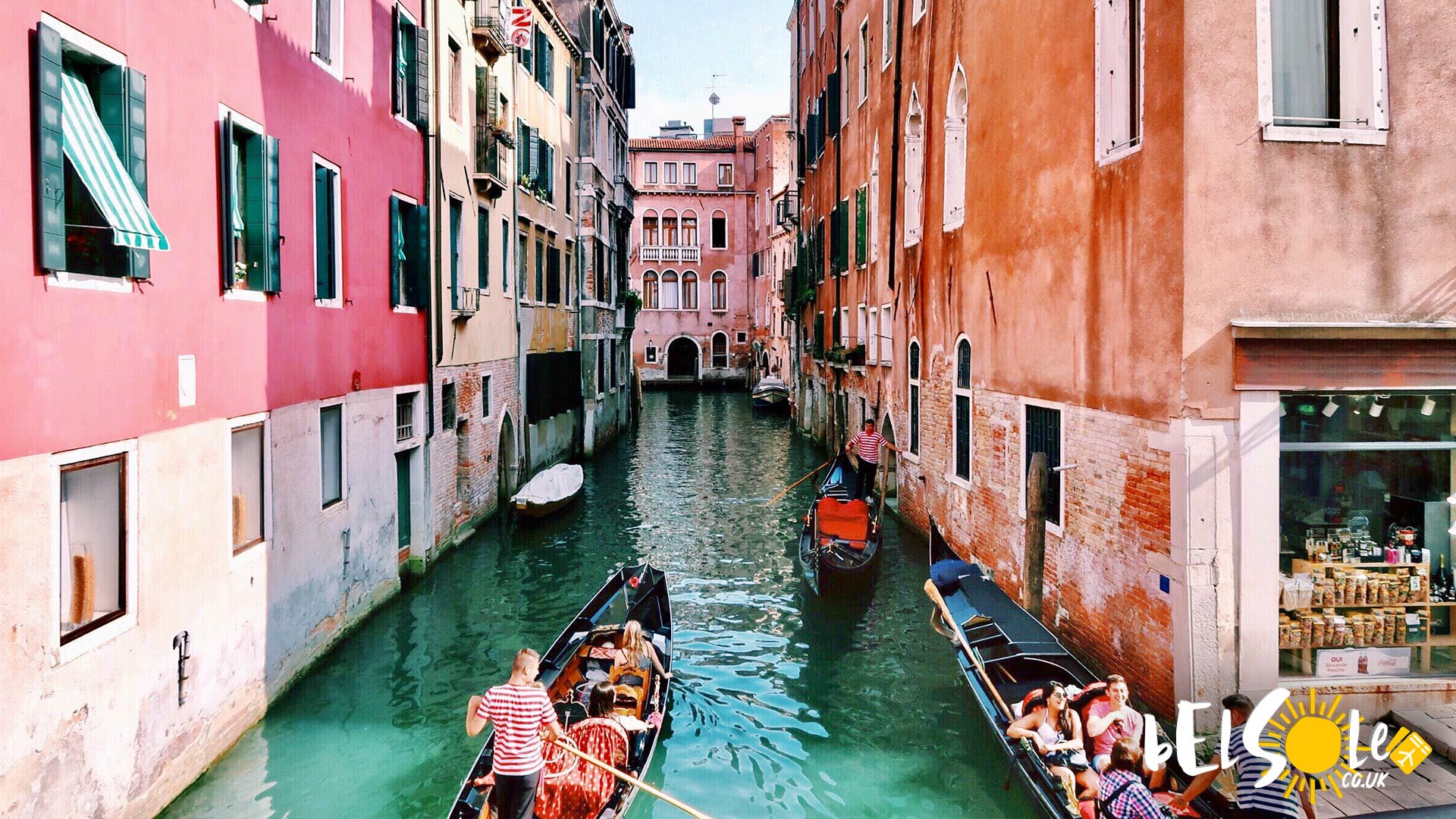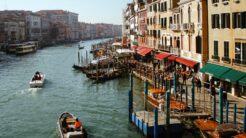Venice is a powerhouse of tourism in Italy, with the peak season attracting over 100,000 daytrippers a day. This, however, has driven Venice into a state of overtourism, which has been impacting the city greatly, often in negative ways. To combat this, the authorities of Venice are introducing an entry fee to the city, starting in spring of 2024. Why? How much is the entry fee to Venice? Where does that money go? We’ll go over all the details today.
Entry fee to Venice
How much will it cost to enter Venice and who will be affected?
Firstly, let’s cover the basics. The ‘entrance contribution fee’ will be €5 for day trippers. This means that if you’re staying in Venice overnight, you’re exempt from the fee. It only affects people who are coming over for a day trip and then leaving. Families of and residents of Venice and the surrounding region are also, of course, exempt from the fee. People coming in for work-related or education-related reasons and minors under 14 won’t have to worry about that either.
How does the fee work?
The fee will be applied to 30 select dates in spring 2024, so it’s basically a test period. Though we do not yet know what these dates will be, they are supposed to fall on the days when peak tourism is expected – so Easter and May, for instance. Then, people coming over for a day trip, not to stay overnight and not as a resident, will have to pay the €5 through the portal which also isn’t launched yet and is to be ready soon. For this, you’ll receive a QR code that will certify your stay. For the duration of the trial, though, you’ll also be able to pay in person if spotted without a code, just in case people aren’t aware yet.
For the time being, the funds gathered from this will go to fund the system itself – ergo the booking site and the local authorities who will be responsible for code checks.
What is the fee about?
Why does Venice need a fee?
The idea is that daytrippers don’t contribute much to Venice financially while costing the city a lot in terms of infrastructure and stress on the locals. Daytrippers make up the vast majority of tourism in Venice, spending about 3-4 hours in the city and going through a standard tourist itinerary without spending any money in these sites. Overnight visitors aren’t charged because they spend money on both meals and accommodation. The latter of which is also already taxed by Venice, so there’s no need to tax these tourists twice.
Though other places in the world have put forth forms of taxation of tourists to then fund back what tourism takes, Venice will be the first city to directly charge people for entering the city.
Why?
The reason why it’s Venice of all places is because the 30 million annual visitors are leaving a mark on the city – both metaphorically and literally. Firstly, the city is constantly overcrowded which makes living there as a local like being stuck in an amusement park for much of the year.
Simultaneously, the tourist accommodation market in Venice has developed to the point where the number of tourist beds is now higher than the number of local residents. This is both due to the high incentive for landlords to invest in tourist accommodation rather than to rent it out to locals and that this then leads to rents being so high that locals can no longer afford to live there. And because Venice is what it is, it cannot exactly be expanded upon easily to make more housing to combat the situation. Though this isn’t exactly going to be affected by the day-trippers getting taxed, it just goes to show how insane the tourist numbers in Venice are in general, both on the front of daytrippers and people staying in the city.
Secondly, as Il Gazzettino notes, the high degree of wave motion created in large by tourist boats is slowly eroding the bases of many buildings. Simultaneously, not enough maintenance is being put forth to combat this – only a few years ago have the authorities banned cruise ships from entering the centre of Venice for exactly this reason.
Responses to the €5 entry fee
Will the fee really help Venice?
There have been some positive responses, like the local trade associations, who are enthusiastic about the idea. A lot of people, however, are sceptical that this solution will solve anything at all. For many, the €5 fee will not stop the large swathes of people from coming over and, in its current form, nothing else is being done about the local residents having no reason to stay local residents for much longer. Other critics also suggest that focusing on peak days only serves no purpose, as Venice is overloaded for most of the year. As such, some suggest that to really lower the numbers of tourists, Venice would have to rebrand itself completely to focus on a different type of audience – which would, of course, take years.
Still, we need to remember that, for the authorities, this is merely a test. It doesn’t necessarily have to stay in this form and, hopefully, if it flops, the authorities may try one of the various other sensible solutions that have since been proposed. It is also a humbling reminder for us, as tourists, that most places that we visit are also places that other people call home.
See also:






